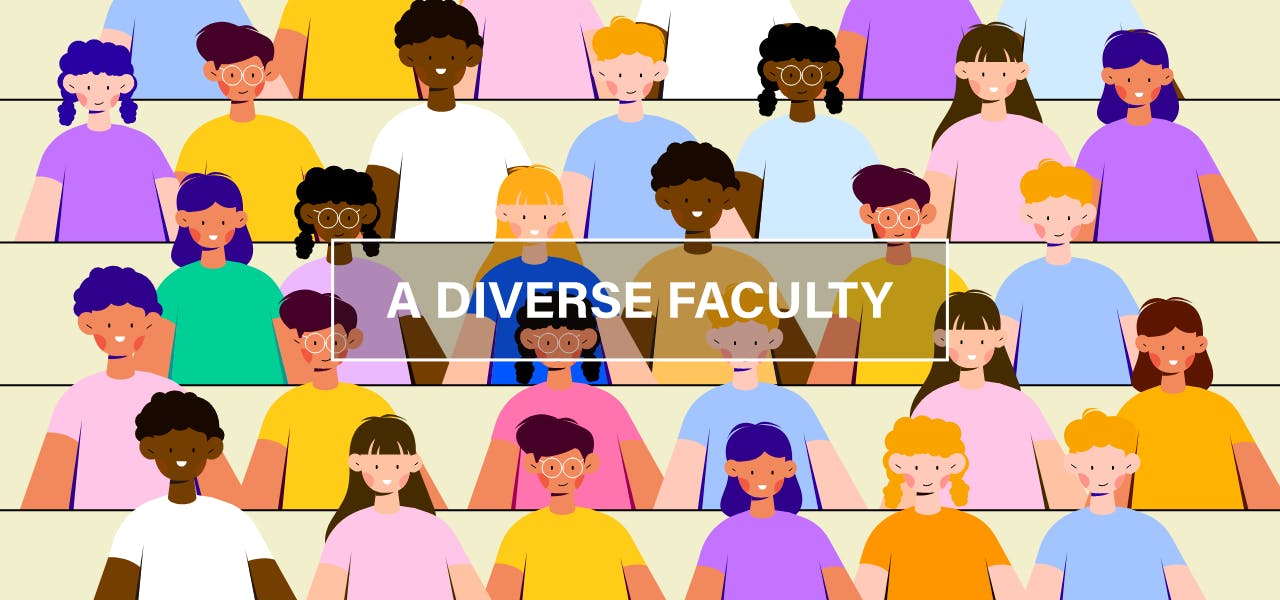Diversity is a part of every aspect of society in civilized countries, and it should be reflected in the educational environment. One can not assume that every student is well-versed in inclusion simply because they’re in the higher education classroom. It continues to remain part of the role of each professor and faculty member to model this behavior in front of each learning mind they interact with, no matter how young or old.
One way to do this is at the institutional level, as the hiring bodies ensure they model diversity among faculty members. Students are smart subconsciously: Those who don’t look like their role models will realize that quickly and begin internalizing it. When the institution makes it a point to hire those with diverse backgrounds, everyone benefits.
What Diversity Means
Diversity extends into every aspect of a cultured civilization. It appears in a person’s age, gender, background, ethnicity, experiences, and every other factor that makes an individual unique. All of these differences add to the richness of the world, particularly in the person’s direct environment. This is an essential part of teaching as the experiences of a student shape the way they learn and interact with others.
When these differences are accepted and shared, it enhances the intellect and personality of those who learn from them. However, this must be done strategically, as it can also decrease cohesiveness and increase stress and anxiety. By implementing an instructional system where the faculty is comprised of diverse intellectuals ready to work together for the good of the students and institution, the advantages become exponential.
Why Higher Ed Needs to Be Diverse
The benefits of a diverse higher education institution impact students, faculty, and the community. These changes systematically enhance society at large as those with diverse backgrounds come together and learn how to integrate as a whole.
When higher ed is diverse, students are exposed to role models like themselves and see openings in their future they may not have considered before. On the opposite spectrum, students get to know and respect individuals from other cultures and with different values. This opens them up to perspectives they didn’t have and helps them to see that “different” can equate to “good” in many situations.
From a legal viewpoint, diversity is also required. Educational institutions must be diligent about adhering to the ever-changing laws on inclusion, from student bodies and curricula to faculty diversity.
Diversifying the Faculty Has Many Benefits
Whether you’re attempting to diversify due to preferences or because you’re legally obligated to do so, when you strategically bring in unique individuals to form a collective whole, you’ll see a plethora of benefits. They won’t happen overnight, but if you encourage cohesion and acceptance, the advantages are widespread. Here are five simple benefits that make an immense difference to the students that you’re educating.
- They’re prepared for the real world. Some of your students may have been sheltered from other perspectives because of their home environment. However, the real world is full of diversity, from race and ethics to socioeconomic factors. Bringing this diversity to a controlled environment teaches students how to respect people with other values and differences before they graduate.
- Discrimination is reduced. No matter where you go, discrimination happens when those involved aren’t educated on diversity. This can become a legal issue if a person doesn’t understand the ramifications of discrimination and is sued because of their behavior. Teaching students in the education system about discrimination and the consequences can reduce these claims.
- Positive relationships are fostered. When a student enters the school with biases, then builds a relationship with someone who meets the characteristics of those biases, they begin to question previous beliefs. Eventually, they realize that what they assumed to be true isn’t, and this tends to lead them to question their other limiting beliefs, as well.
- Students feel like they belong. Depending on the person’s background and environment, they may have felt like they were the only “different” one in the world. While we all know better, logic doesn’t always play a role when someone feels excluded. This is common with those who live in an inclusive system, yet they’re deaf, blind, or have other disabilities and don’t know anyone else with those shared characteristics. Through meeting others who also are uniquely designed, it enhances a student’s sense of belonging.
- Students are better served educationally. Statistics show that students in a diverse environment have better test scores than their counterparts. Heterogeneous environments encourage and foster creativity, shared learning, and increased knowledge.
Putting a diverse faculty in place in your institution will have benefits extending far beyond the school year.
